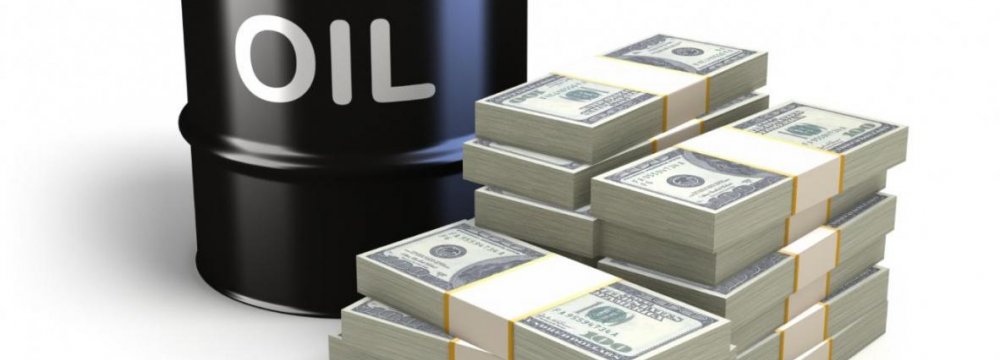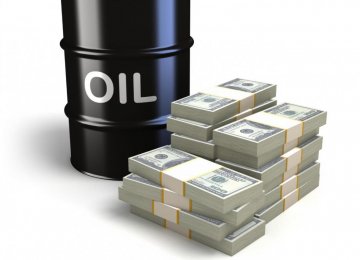The prospect of an extended period of cheap oil has quickly convinced the government that raising taxes is a must. However, big challenges lie ahead.
Global oil prices have fallen from their all-time highs between 2008 and mid-2014 to just below their long-term average. According to Ruchir Sharma, an economist at Morgan Stanley Investment Management, the 100-year inflation adjusted average global oil price stands around $50 per barrel. Bloomberg reported on Monday that Brent prices stood at $48.16/bbl.
Ruchir Sharma argues that oil prices move in cycles. The trend is for prices to rise over a ten-year period and then return to lower levels for about two decades.
Interestingly, the Islamic Republic’s 36 years of existence have fallen in line with one full oil price cycle. In the early years after the 1979 Islamic Revolution, oil prices reached all-time highs as Iran lost its status as the world’s largest oil producer and was then attacked by another oil producer, Iraq. Despite the fact that the country’s vulnerable position did not allow Iran to enjoy these higher prices fully, the war made oil one of the essential pillars of politics.
Between the late 1980s and the mid-2000s, global oil prices returned to their long-run lower level. However, oil remained central to government coffers. In the first period, oil was used to finance post-war reconstruction projects and in later years, particularly during Mohammad Khatami’s presidency, lower oil prices were compensated by higher production. It was only in 2005, accidentally the year in which former President Mahmoud Ahmadinejad turned to power, that global oil prices again assumed their upward path.
Over the past decade then, the identity of public finances has changed drastically as government coffers and initiatives have come to depend increasingly on oil money.
Need to Shift
The government is now faced with putting its business in order. According to an article economist Dr. Ali Shams Ardakani wrote in the Donya-e Eqtesad newspaper, 60 percent of all domestic economic actors do not pay taxes, be that through official exemption or through tax evasion.
Increasing taxes had formally already been turned into a priority before the current oil dip. Key moments in this movement include the introduction of article 44 of the Iranian Constitution in 2006 and more substantially the start of the Fifth Development Plan in January 2009.
However, the Fifth Five-Year Economic Development Plan (2011-16), ratified at the peak of the oil boom, is highly unspecific about how exactly taxes should be raised. Article 22 of the plan rather generally argues for “changing the perspective on oil and gas and the income obtained there from becoming a resource and capital for economic vitality, instead of a source to secure the public budget.”
Despite that, incremental increases in several key tax benchmarks have occurred, notably in response to the spinning out of control of various subsidy schemes and related inflation. Value added tax for example has increased from zero in 2009 to eight percent in the current government budget, which started in March 2014.
The current budget stipulates that 671 trillion rials ($19.4b) should come from taxes in the current year, out of which a record 25 trillion rials would be constituted by value added tax. Ali Asgari, head of the National Tax Administration, predicted recently that 95 percent of this total amount would be achieved by the end of the year and that tax revenues were already up by 52 percent, which is significantly higher than annual inflation of around 20 percent.
Low for Global Standards
Nevertheless, regular taxes in Iran are still very low for global standards. Taxes currently account for about 44 percent of government revenues and 7 percent of GDP. In contrast, taxes constitute 15 percent or more of the GDP of many countries. In neighboring Turkey, for example, tax revenues accounted for 20.4 percent of GDP in 2012, according to the World Bank.
The global oil crush will therefore still come down hard on the Iranian government. Some see this as a possibility to make reforms in shock-therapy style. Ardakani calculates that the government next year will face a deficit of at least 300 trillion rial. This deficit would take shape even despite the fact that the government plans to raise tax revenues to 874 trillion rials, which would mean an increase of 30 percent year-on-year.
Ardakani argues that the government should in response increase revenues, notably by gradually but rapidly increasing gas and petrol prices to their Persian Gulf averages. However, the speed of this approach may be too much skewed against middle-class and poorer citizens, who have little money to spare on higher petrol prices.
A more effective way may imply gradually expanding the tax regime to cover the vast bulk of economic activities. This expansion should not be skewed against the vast majority of Iranians. Instead, such a tax regime should start with firms and include the introduction of a more progressive tax regime.
Furthermore, Iran’s debt market is still in its infancy, primarily because of oil revenues. However, with the expansion of a viable tax regime, the government may want to start experimenting with marketing more of its debt.





